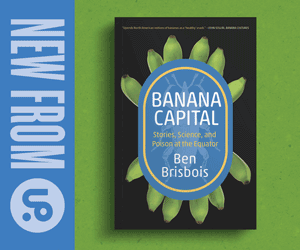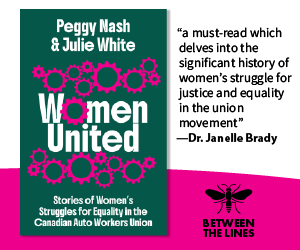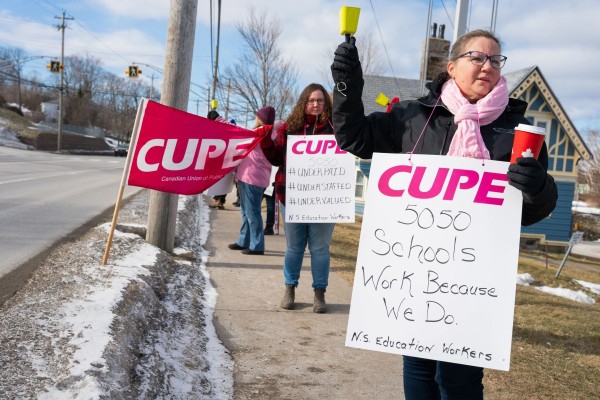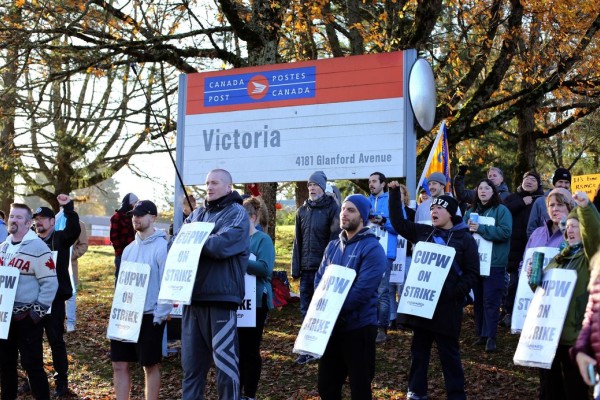Tough union, tough lessons
Learning from the CUPE 3903 strike defeat at York University

This article is the continuation of an exchange between two actors in the recent York University Strike. This debate took place in the May/June 2009 issue of Canadian Dimension. To view the online version of this debate, please consider reading our editorial and the subsequent article by Tyler Shipley.
Over the last three decades in Canada, governments’ neoliberal policies have created a crisis of under-funding in post-secondary education. With steep funding cuts, universities and colleges have looked to other measures to balance their books: increasing tuition and ancillary fees, soliciting greater private funding and implementing cost-reduction measures like increased reliance on contract faculty to teach courses. The present economic crisis has further exacerbated the financial situation at many universities, as cash-strained investors restrict their donations, universities’ sizable endowment funds bleed with investment losses, and deficit-laden governments balk at increasing education funding.
It was in this context that CUPE 3903, a joint union of the contract faculty, teaching assistants and graduate assistants at York University, went on strike for 85 days, declaring that they would not cede their economic demands in a time of recession. While some hoped the strike would be a call for increased labour militancy during a period when economic fundamentals were being questioned, the strike ended in a resounding defeat, as the McGuinty Liberal provincial government, with public support, legislated the union back to work. The outcome set a dangerous precedent for the broader sector, as the government demonstrated that it could use back-to-work legislation to avoid addressing issues of chronic under-funding.
A tradition of militancy
What happened? The university administration’s odious refusal to bargain is one element of the story. To understand the lessons of the strike for union organizing, however, it is also necessary to provide an account of the miscues and structural problems that haunted the union’s strategy.
Within the university sector, CUPE 3903 is a local that stands out. It has a long tradition of militancy, and its previous contracts set wage and benefit benchmarks for unions in the sector. In 2000-01, the local staged a momentous, 76-day strike, resisting York University’s attempts to claw back tuition indexation and other wage concessions in the midst of the Harris years.
But the mythologized 2000-01 strike was different from the current strike in many respects. That strike followed the Ontario Days of Action and the teachers’ strike, and there was a context of politicization, which involved large sections of the 3903 membership. The 2000-01 strike mobilization could rely on networks built through these struggles, as well as the previous two rounds of bargaining, which had brinked upon strikes. In contrast, the 2008-09 strike occurred in the context of years of labour and social movement demobilization that had left unionists unable to draw upon such networks.
Yet, prominent union militants missed these important contextual differences in developing their strategy for the recent negotiations. Instead, two main lessons were drawn from the 2000-01 strike. First, the length of the strike mattered. Second, internal democratic innovations were a major reason for the success of the 2001 strike. CUPE 3903 has criticized and eschewed traditional union processes, maintaining an uneasy relationship with CUPE’s national organization. Unlike most unions, CUPE 3903 has an open bargaining process, wherein the bargaining team reports back to the general membership and relies upon the membership for guidance throughout bargaining.
Dead ends and arrogance
Ideally, this process ensures accountability and prevents the bargaining team from becoming isolated in conversations with the employer and disconnected from members’ key concerns. This democratic practice relies upon high levels of member engagement. Unfortunately, however, by neglecting the importance of regular representation of the membership in committees, a vanguardism celebrating stamina came to dominate the union through its open participatory structures.
The union went into the strike riven by deep fissures within its membership that inhibited the dialogue necessary to build consensus around key demands. 3903 has typically bargained aggressively, relying upon solidarity between its diverse units to push everyone’s concerns forward. However, attempting to balance the concerns of the union’s various constituencies in this round, the bargaining team simply conglomerated all the demands into a massive stack of proposals, which they proved unwilling or unable to reduce under pressure from the membership. Effectively, the bargaining team was unable to bargain.
The administration, led by a president with a predilection to outsource bargaining to arbitration processes, balked at the number of demands and refused to negotiate. CUPE 3903, however, had a history of strike successes and welcomed the opportunity to confront the neoliberal logic of the university. There was a sense of invincibility about the local — that if we only waited long enough, the administration would cave.
The union strike slogan — “be realistic, demand the impossible,” a borrowed phrase from the May, 1968 revolt in Paris, France, when a general strike paralyzed the city and threatened to overturn the country — betrayed an arrogance that had developed within CUPE 3903 as a result of its mythologized militant history. While some leading members gleamed with revolutionary ardour, their pretensions to lead the masses showed an alarming disconnect with other sections of the union membership, as well as with the larger public.
A strike with a shifting focus
This strike was one that struggled to find its central issue. As talks stalemated long before the strike began, the union entered the strike with an alarming array of demands still on the table. This became something of a public-relations coup for the administration. The core demands throughout the strike related to job security, wages and graduate-student funding, the indexation of funds to membership growth, and a two-year contract so the union could participate in sector-wide coordinated bargaining in 2010.
In the early weeks, the union couched the strike in terms of a fight for a living wage for graduate students living in poverty. But a monetary strike found little public sympathy in a time when many were losing their jobs, and the union’s monetary demands required a broader political solution that the absence of coalition building made impossible. The union belatedly shifted its rhetorical focus to the precarious nature of academic work where contract faculty needed to reapply regularly for their jobs.
Although the desire for job security resonated with the public, support among key labour allies for CUPE 3903’s specific proposals was only lukewarm. Instead, the union sought to redefine the sector single-handedly.
Within CUPE Ontario there were plans to coordinate various locals bargaining in 2010, and shift the terrain from a battle within a workplace to a provincial struggle surrounding the nature of post-secondary work. Participating in this collective action was the rationale for a two-year deal. This demand was repeatedly and regularly buried beneath demands for immediate gains, with key militant voices balking loudest at prioritizing it. In failing to prioritize participation in coordinated bargaining, CUPE 3903 made its most crucial error.
Sections of CUPE 3903 were motivated by the dream of a general strike. But their self-aggrandizement and disdain for working with other unions effectively undermined the objective conditions that would make such a struggle possible and winnable. While unions must be willing to strike to win, it is also necessary to build coalitions and to coordinate larger collective actions — including not only other universities but also, at least to some degree, professors and students — to redefine how post-secondary education works.
Tyler McCreary is a post-doctoral fellow at UBC and lives in Vancouver on unceded Coast Salish territory. He recently completed his PhD at York University on relations between Indigenous peoples and colonialism in resource extractive industries in BC.
This article appeared in the May/June 2009 issue of Canadian Dimension (Mayworks: A special issue celebrating and debating labour).










